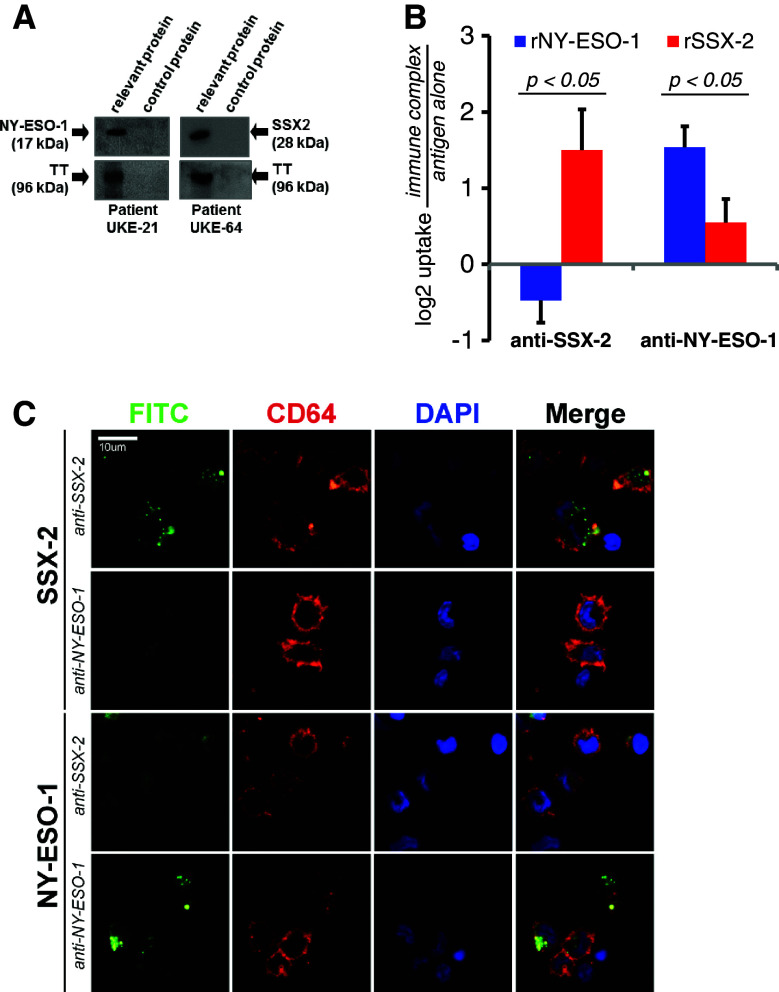Fig. 2.
Functional characteristics of NY-ESO-1- and SSX-2-specific patient antibodies. a Western blot analysis of the complement-activating capacity of NY-ESO-1- and SSX-2-specific antibodies. Tetanus toxoid (TT) served as positive control for complement activation by TT-specific antibodies. Complement activation was detected through a complement factor C3-specific antibody. Sera from NY-ESO-1 antibody-positive patient UKE-21 and from SSX-2 antibody-positive patient UKE-64 were able to activate complement when bound to the respective CTA. The same phenomenon was seen with the patients’ TT-specific antibodies. When exposed to control protein GST, no complement activation occurred. Results of one representative experiment are shown. b Uptake of FITC-labeled CTA protein after immune complex formation with either SSX-2- or NY-ESO1-specific antibodies from high-titered MM patients. Bars indicate mean logarithmic fold changes over antigen alone for the respective CTA for 6 different healthy blood donors. Error bars indicate standard error of means (SEM). c Partial confocal sections of one representative antigen uptake experiment. Formation of specific immune complexes comprised of FITC-labeled antigen, and the corresponding MM patient-derived antibodies increased antigen uptake in CD64+ APCs from one healthy donor. In contrast, the same antibody did not increase uptake in the unspecific context

